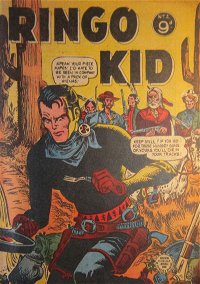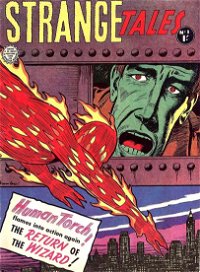Horwitz by James Zee
Introducing Horwitz Publications
From about 1950 to 1966, Horwitz Publications was a large publisher of war, western and crime comics, including popular titles such as Navy Combat, Fast Gun, Wyatt Earp and Buffalo Bill.
Horwitz predominantly reprinted US comics, sourced mainly from Timely/Atlas/Marvel, but with other US publishers and newspaper strip reprints. In the late 1950s, it created some local comics, notably adaptations of its Carter Brown novels11Horwitz's Carter Brown novels were by far its most popular product. Originally published under the name Peter Carter-Brown in 1951,... and The Phantom Commando, created by John Dixon but passed to Maurice Bramley (b 1910)22See also Daniel McKeown archived article on Bramley at Pandora, originally from Comics Australia.... who drew it until 1956.
At its peak, Horwitz reportedly released up to 48 comics and 24 fiction titles each month, with print-runs of up to 250,000 copies.33See The mysterious case of Carter Brown: or, who really killed the Australian author? by Toni Johnson-Woods, Australian Literary... Many of Horwitz's comics had covers by Bramley, whose detailed and realistic drawing gave the publisher's titles a distinctive style. Bramley also contributed some filler stories.
Another distinctive feature of Horwitz' comics is the company's "code" seal. Horwitz issued a Code of Publishing Ethics to all its editors, artists and authors in March 1954. The code particularly focused on comics and banned sex, poor grammar, blasphemy and profanity of any type.44Page 209, John Ryan Panel by Panel (Australia: Cassell Australia)....
Horwitz Publications was founded in Sydney in 1920, when Israel and Ruth Horwitz produced the Sporting Weekly newspaper. The company is most assocated with Stanley Horwitz, who took over publishing operations in 1956.
Horwitz rapidly expanded into books, trade journals, community newspapers and magazines, and is fondly remembered for its numerous pulp novels. By 1960, after the arrival of television, the market for pulp, pocket size paperbacks collapsed and Horwitz moved into higher quality paperbacks and educational books.55Craig Munro and Robyn Sheahan-Bright report in Paper empires: a history of the book in Australia 1946-2005 (Univ. of Queensland...
The earliest Horwitz comics were produced under the imprints of Associated General Publications Pty. Ltd and Transport Publishing Co., before converting to the more recognised Horwitz Publications Inc. Pty. Ltd. The company ceased publishing comics in 1965 or 1966, soon after establishing a line of Marvel super-hero reprints. Reprints of a number of Horwitz titles were produced by Page Publications in the 1970s.
The Horwitz Group, still with members of the Horwitz family, continues to operate with a magazine division producing material for the adult, sporting, entertainment, audio visual and children’s market.


